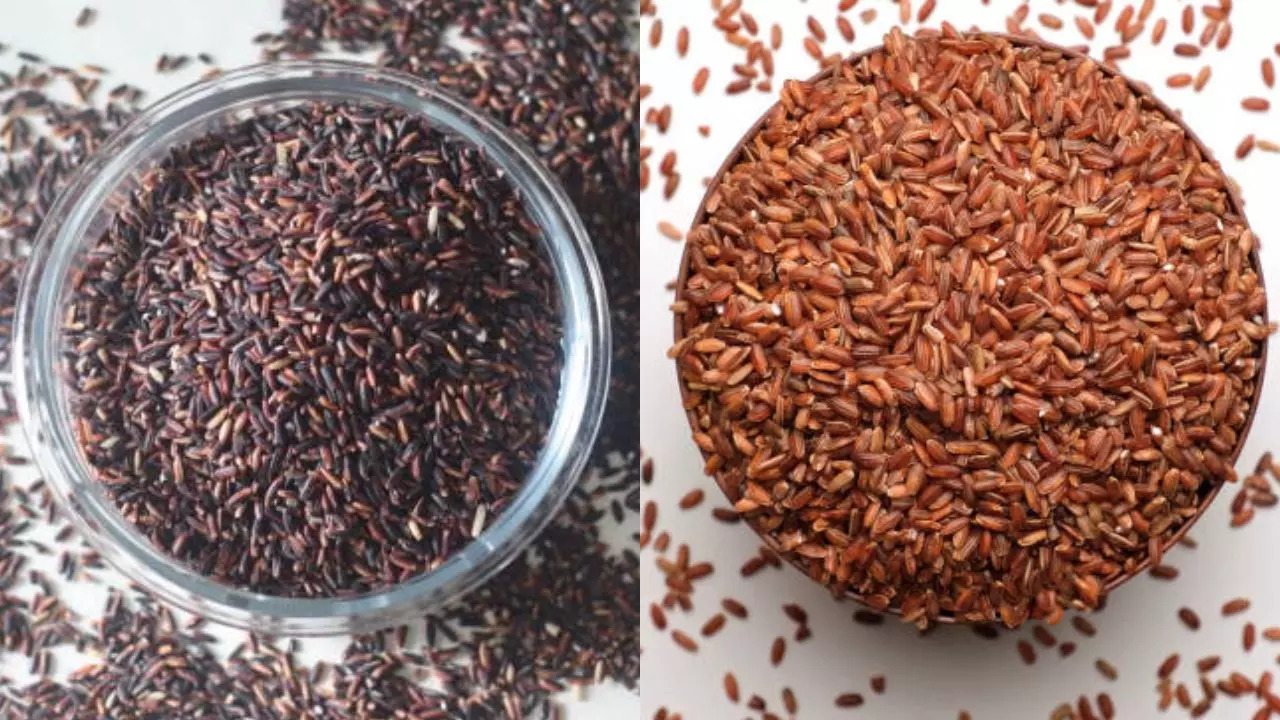Black rice or brown rice: Which one should you include in your diet?
Both black rice and brown rice are nutritious whole grains, each of which offers unique health benefits. Black rice is rich in antioxidants, especially anthocyanins, which protect against chronic diseases, while brown rice is rich in minerals like magnesium and selenium. So which one should you include in your diet? Read on to find out!

Black rice or brown rice: Which one should you include in your diet? (Image courtesy: iStock)
Rice is a staple food for billions of people around the world, and with so many varieties available, choosing the healthiest option can be challenging. Two popular choices among health-conscious consumers are Black Rice And Brown riceBoth are nutrient-rich whole grains, but each has its own set of benefits. So which grain should you include in your diet? Let’s find out!
Nutritional Comparison
Black rice:
Black rice, also known as forbidden rice, is rich in antioxidants, particularly anthocyanins, which give it a deep purple-black color. According to a study published in the Journal of Agricultural and Food Chemistry, black rice has the highest antioxidant activity of all rice varieties. These antioxidants are important for combating oxidative stress, which is linked to chronic diseases such as heart disease and cancer.
100g of cooked black rice gives approximately:
– Calories: 300
– Protein: 8 g
– Carbohydrates: 68 g
– Fiber: 4.9 g
– Iron: 6.4 milligrams (36 percent of daily value)
Black rice is also a good source of vitamin E, which maintains skin health and boosts the immune system.
Brown rice:
Brown rice is a whole grain that retains its bran and germ layers, making it rich in fiber, vitamins, and minerals. Unlike white rice, brown rice undergoes minimal processing, preserving its nutritional content. According to research in the American Journal of Clinical Nutrition, consuming brown rice may reduce the risk of developing type 2 diabetes due to its lower glycemic index compared to white rice.
100g of cooked brown rice yields approximately:
– Calories: 215
– Protein: 5 g
– Carbohydrates: 45 g
– Fiber: 3.5 g
– Magnesium: 43 milligrams (11 percent of daily value)
Brown rice is also high in selenium, which plays an important role in thyroid functioning and has antioxidant properties.
Health Benefits of Black Rice and brown rice
Antioxidant power:
One of the most important benefits of black rice is its antioxidant content. The anthocyanins in black rice are powerful antioxidants that have been proven to reduce inflammation, protect against heart disease, and improve cognitive function. A study published in the Journal of Nutrition found that diets rich in anthocyanins are associated with a lower risk of heart disease and better heart health.
fiber content:
Both black and brown rice are excellent sources of dietary fiber, but black rice has slightly more fiber. Fiber is important for digestive health, it helps regulate bowel movements, lower cholesterol levels and manage blood sugar levels. The fiber content in these varieties of rice can also help with weight management by increasing the feeling of fullness and reducing overall calorie intake.
Mineral Content:
Brown rice is a better source of certain minerals, especially magnesium and selenium. Magnesium is important for hundreds of biochemical reactions in the body, including energy production and muscle function. Selenium, on the other hand, is an essential trace element that protects cells from damage and supports a healthy immune system.
Effect on blood sugar:
Both black and brown rice have a low glycemic index, which means they cause a slower rise in blood sugar levels than white rice. This makes them suitable for individuals with diabetes or those looking to manage their blood sugar levels. However, black rice has a slight edge in this category as it has a higher fiber content and antioxidant properties, which may improve insulin sensitivity and reduce inflammation.
Which rice should you choose?
The choice between black rice and brown rice depends on your health goals and dietary preferences. If you are looking for a rice variety with powerful antioxidant properties and a slightly higher fiber content, black rice may be the better choice. Its rich color and unique flavor also make it an attractive addition to a variety of dishes.
On the other hand, if you prefer higher mineral content and a slightly lower calorie count, brown rice may be more suitable. Brown rice is more widely available and generally more affordable than black rice, making it a practical choice for everyday meals.
Both black and brown rice offer unique health benefits, making them great choices for a nutritious diet. Adding any of these whole grains to your diet can promote overall health, from reducing the risk of chronic diseases to aiding digestion and weight management.
Get the latest news live on Times Now, along with breaking news and top headlines on diet, health and more from around the world.


